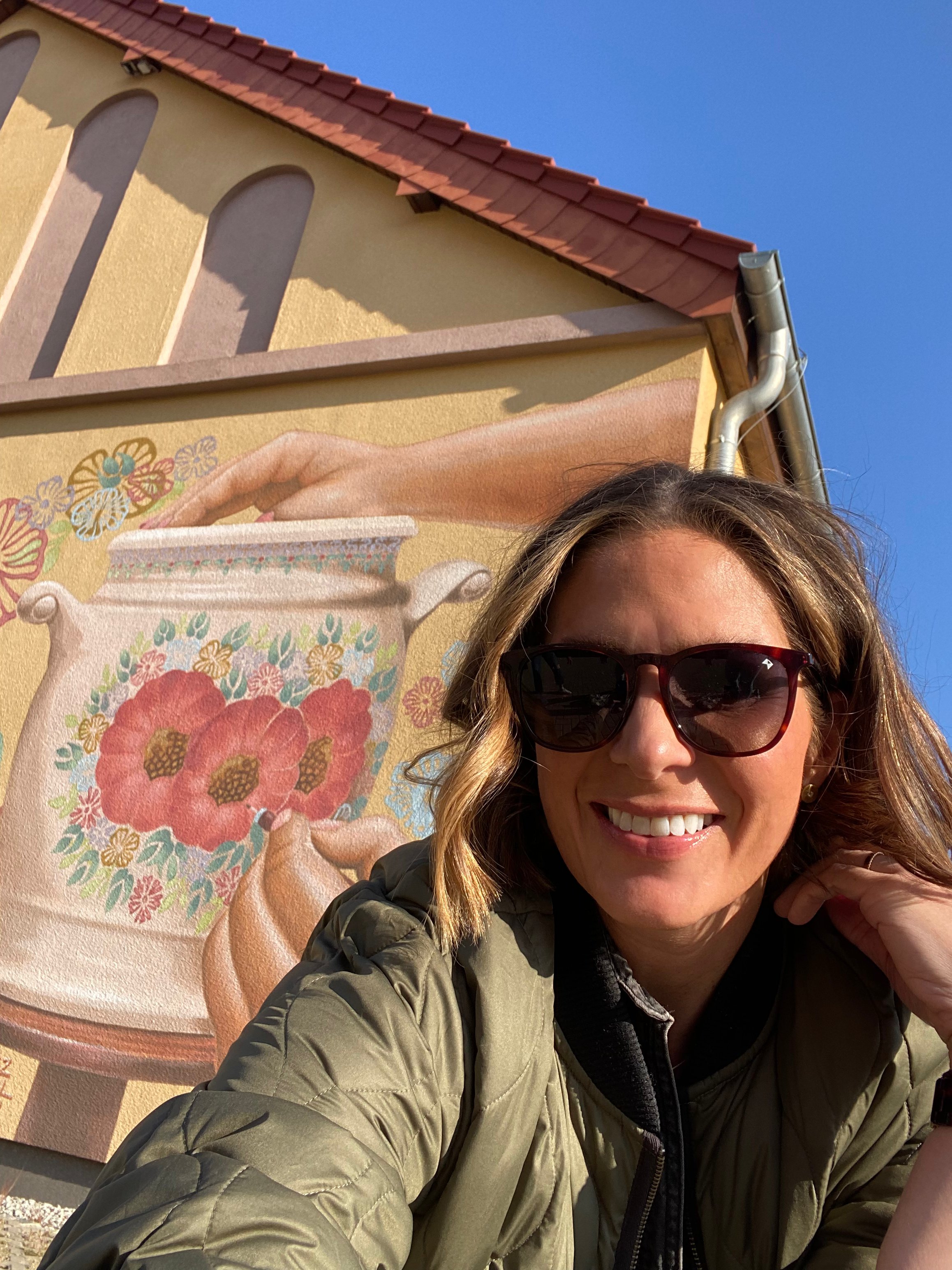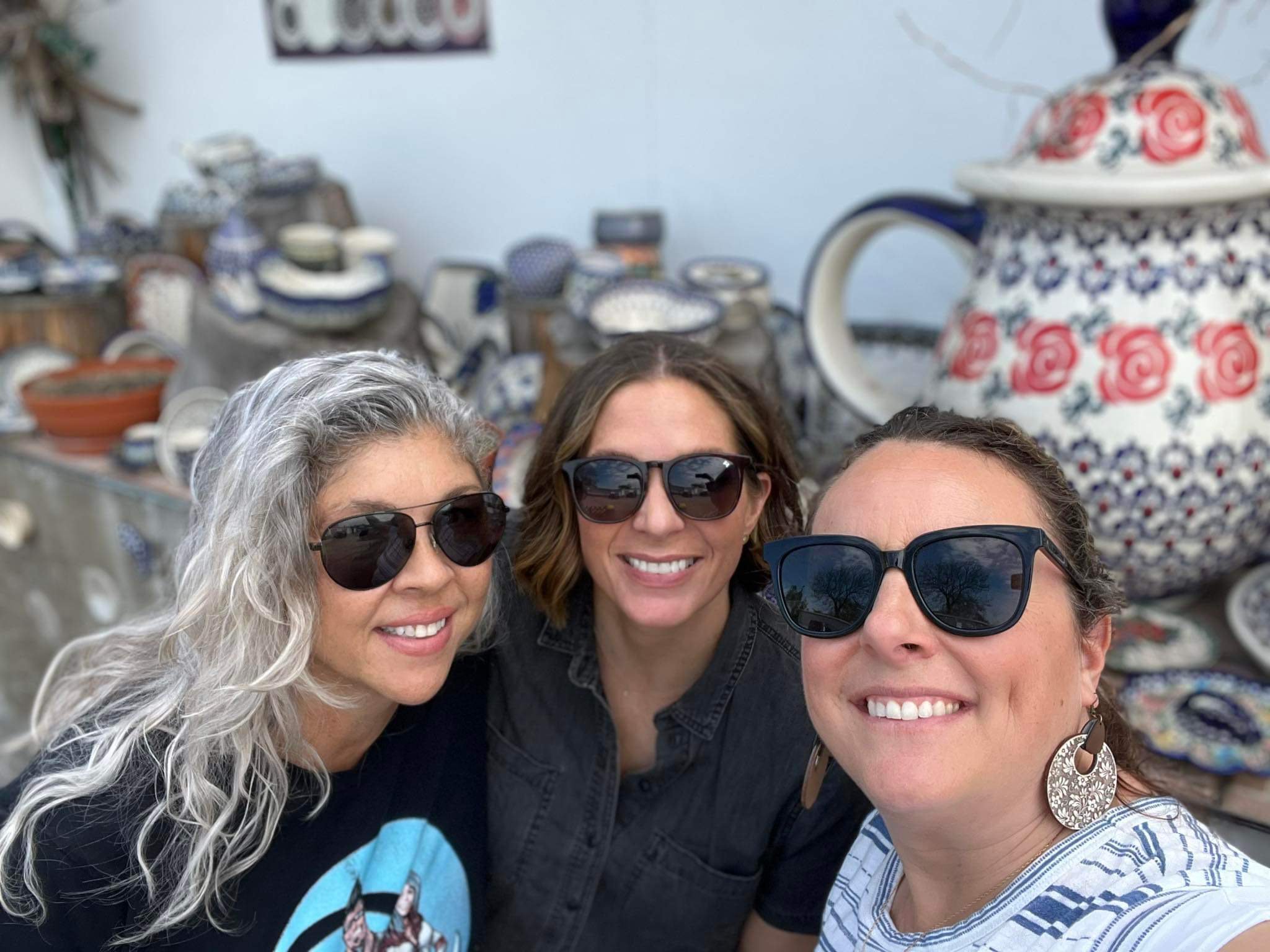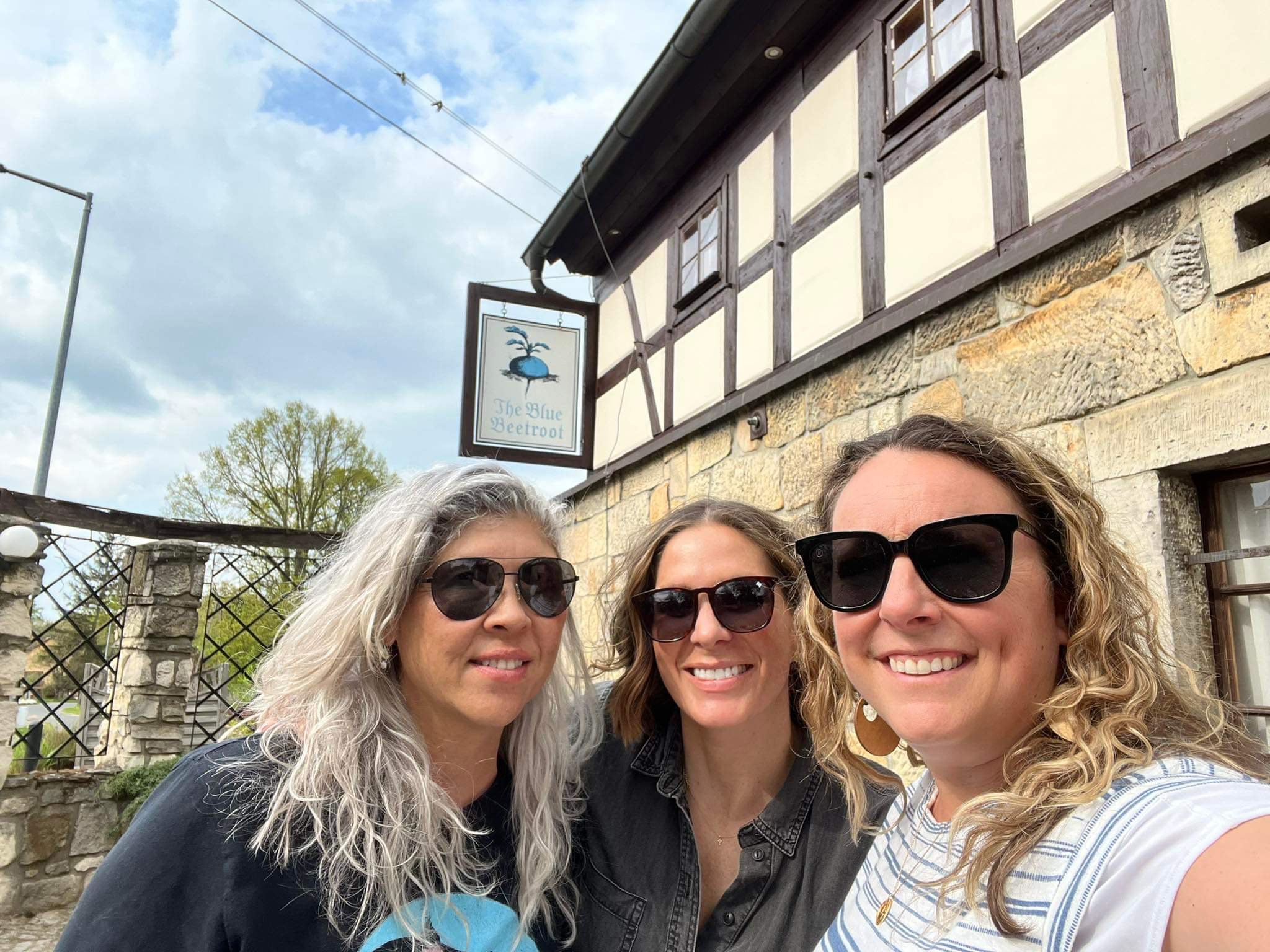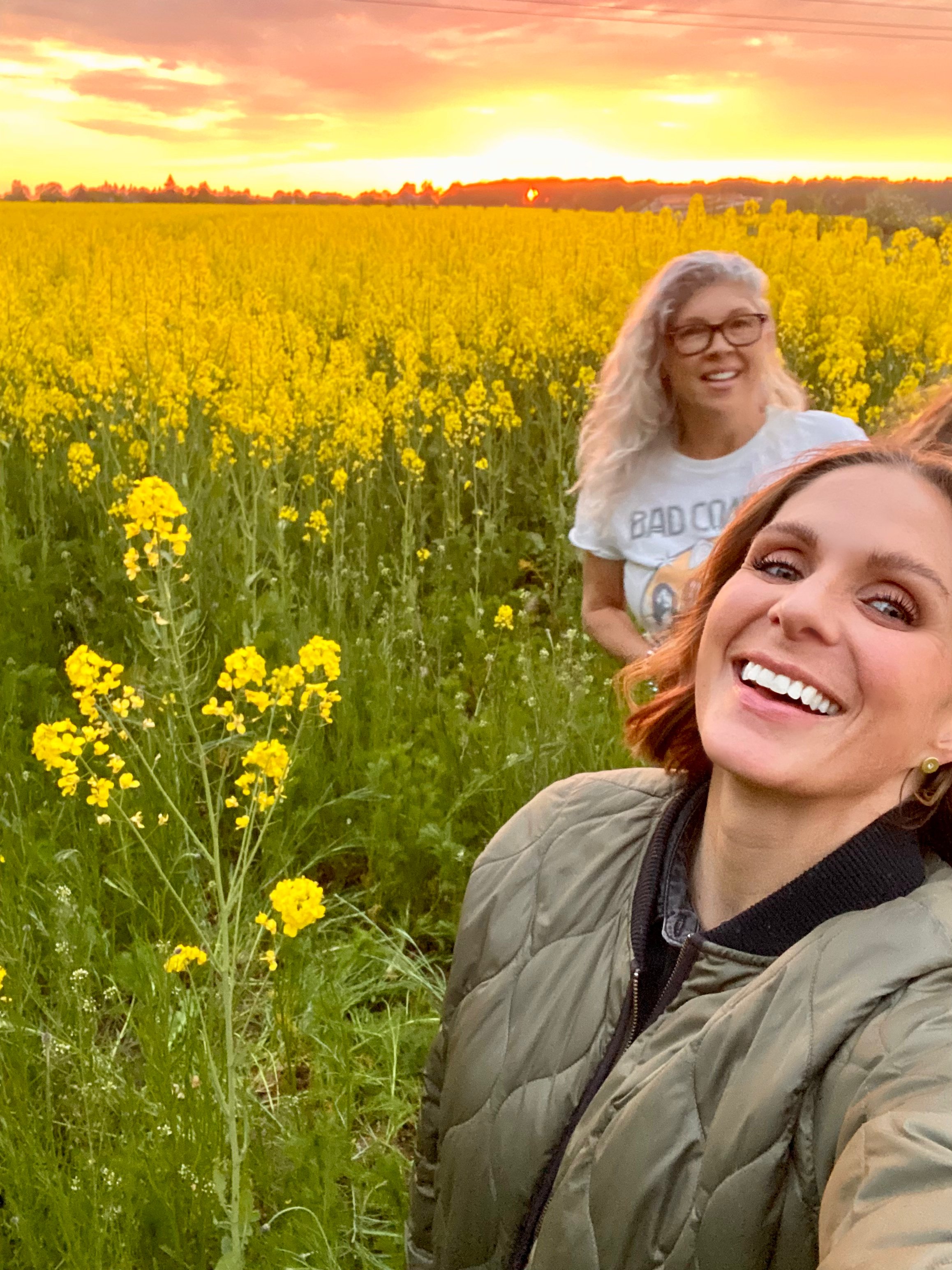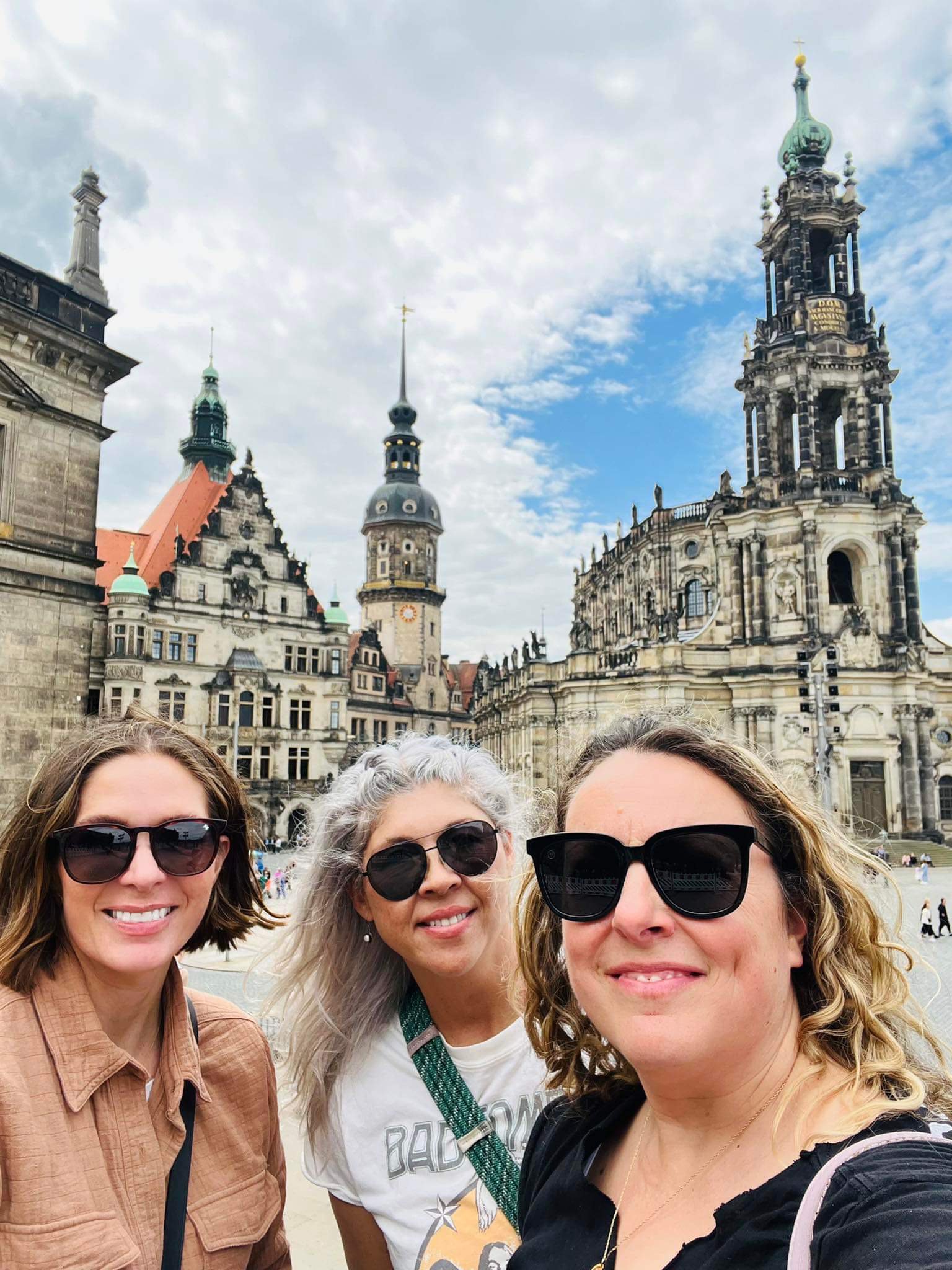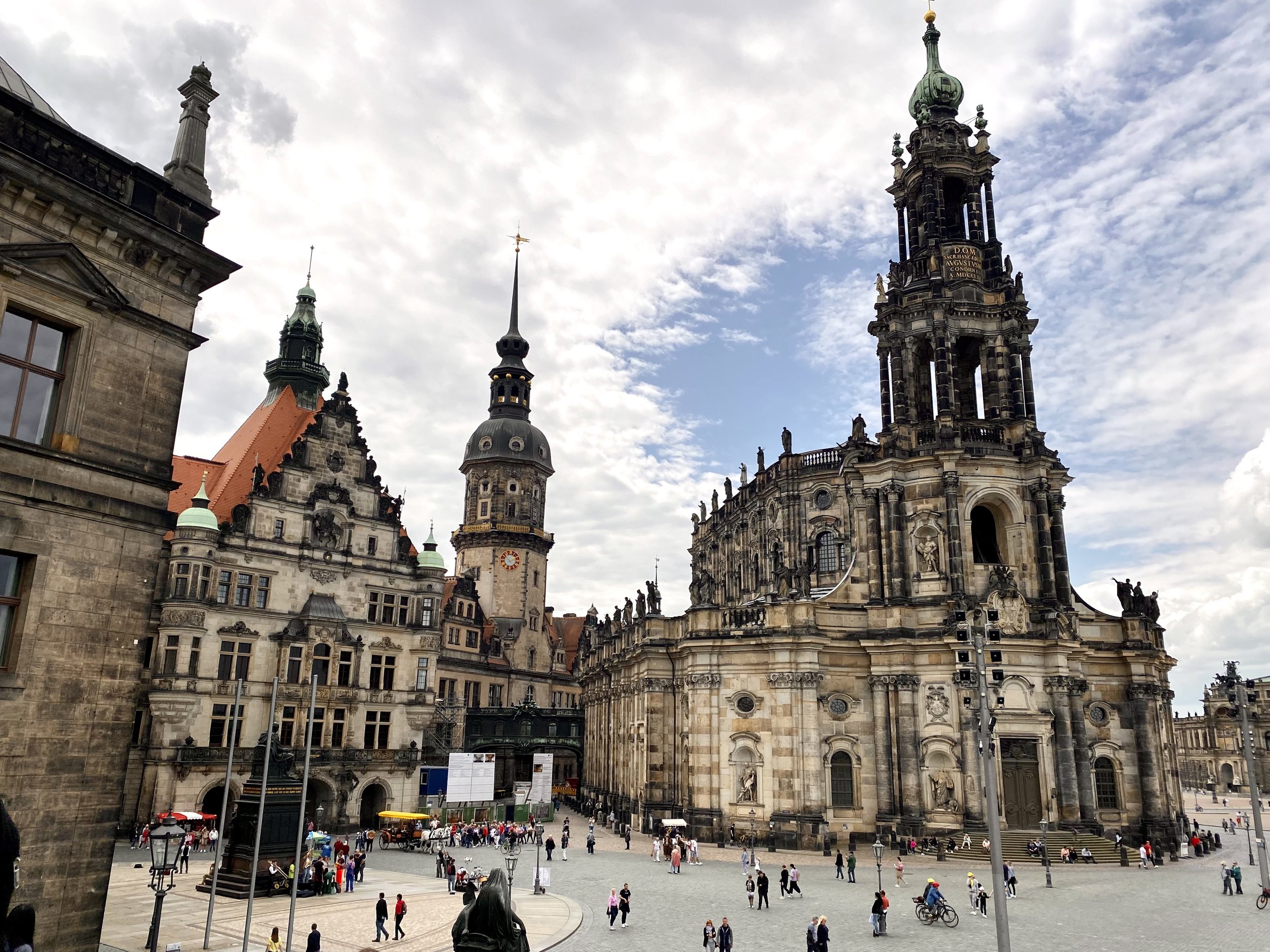Polish Pottery Adventure
Our first jet-lagged days in Germany when we arrived last year were a blur, but I still remember being invited to a delicious dinner in a new friend’s home and noticing her beautiful dishes. There was something about the mismatched blue and white patterns that felt so welcoming and special.
This new friend, Maria, shared with me her adventure in driving to Poland to pick out her treasured dishes and how special they were to her. “You’re going to want these, right?” Matt asked me. Since they made an impression on him too, I decided I would make my own trek to Poland and find some that I loved for us.
Just a few weeks ago, we finally made it happen! Just 24 hours after returning from Morocco, I drove with two friends all the way to Boleslaweic, Poland, where all pottery factories and stores are. My friends happen to be collectors and love everything Polish pottery. I couldn’t have gone with a better group as they helped me to pick things out that would go together and find things that I really loved.
I learned so much about Polish pottery too. One of the things that sets Polish pottery apart from other types of pottery is the heavy stenciling in the glaze. These designs may not be intricate, but the close stacking of painted shapes is a distinction of the Polish pottery tradition. Interestingly, when this style of pottery became organized into guilds around 1511, the pottery designs were applied with stamps fashioned from potatoes.
These are some of the designs I chose to mix and match. I got 13 of everything! It’s an odd number but I wanted to leave some wiggle room for accidents and moving. I think I’d ultimately like 3 more of each kind.
You’ll see classic dots, stripes, flowers, and geometric shapes all in blues, greens, reds, yellows, oranges. I think the best strategy when looking to buy Polish pottery is to plan on having lots of different patterns rather than all the same one. There was usually a limited number of each design, or unique shapes at the different artisan shops, so if you choose just one pattern and one breaks years down the road, you’re kind of stuck! I ended up selecting five different patterns that mix and match with each other of plates, small plates, pasta dishes, bowls, baking dishes, pitchers and pie plates. I got home and already realized I would love to have smaller bowls and more bakeware/serving pieces. So, I guess I’ll have to make the trip back next year.
Something I found interesting is that the Polish people really don’t buy Polish pottery themselves. One woman we spoke to said it reminds them too much of Communist times when all they had to decorate their homes with was their pottery. Their markets are mostly to other countries around the world.
The dinner pierogis were delicious! Filled with potatoes and cheese, or mushrooms and cabbage, or spinach and feta. I really liked the “Russian” one. The dessert ones were…not good. One was filled with a cheese that they eat with everything here — eggs, toast, even chocolate. The server was adamant that we try it alone because it’s such a common and loved thing here. We did not like it! It tasted like sour cottage cheese to me.
We stayed at the Blue Beetroot while we were there and it was such a perfect place with a great breakfast and dinner. We loved walking the country roads in the evenings and watching the most stunning sunsets over the fields upon fields of thick, yellow Rapeseed flowers. It felt like a slice of heaven.
Stunning! It really looks like this everywhere through Europe the end of April and beginning of May. It’s so bright it almost looks fake. And the air smells divine.
One the way home we stopped at the “Jewel Box of Europe,” Dresden to see the sights. This city was almost completely destroyed in WWII and the city went to great lengths to rebuild and restore. One woman remembered going to work everyday to rebuild just to get a hot meal for the day. It was special to see the original stones on some of the buildings and see it as it is today.
We were so lucky to be there when the Spring Fest was still going on. I love how people are out just enjoying the sunshine and the sites.
Procession of Princes Mural. This was one thing that withstood the destruction of WWII. It is made up of 23,000 Meissen porcelain tiles. A total of 94 people are depicted in the picture, 35 margraves, dukes, electors and kings of Saxony, as well as 59 scientists, artists, craftsmen, soldiers, children and peasants, and further numerous horses and two greyhounds.
I am always moved seeing “stolpersteines” as memorials to victims taken to concentration camps and murdered in WWII. This says, “Here worked chaplain Alojs Andritzki, born 1914, arrested 1941, murdered at Dachau, February 3, 1943.” This stolperstein was just below the steps of the Catholic Church in the picture above.
The Opera House!
Just down the street and around a corner from the Opera house infant of the central station is this mural made 1969 during Communist rule in Dresden. Two of the quotes on the mural read, “We are the winners of history” and “Working-class leaders are not angels, not saints, not heroes, but people like everyone else. They make mistakes. The Party corrects them.” There also used to be a giant statue of Lenin followed by two comrades out of red granite here that was taken down after the fall of communism. Many such art installations and statues that were once part of the communist block countries have been torn down or relocated to designated areas in cities, or picked up by art collectors. It was fascinating to see this in Dresden. It was recently restored in 2017.
This trip was a fun 3-day weekend with friends and I can’t wait to go back again. It was so fun to put the dishes away and have the kids and Matt love them so much too. I love having memories attached to the things I use every single day. I am so grateful!


